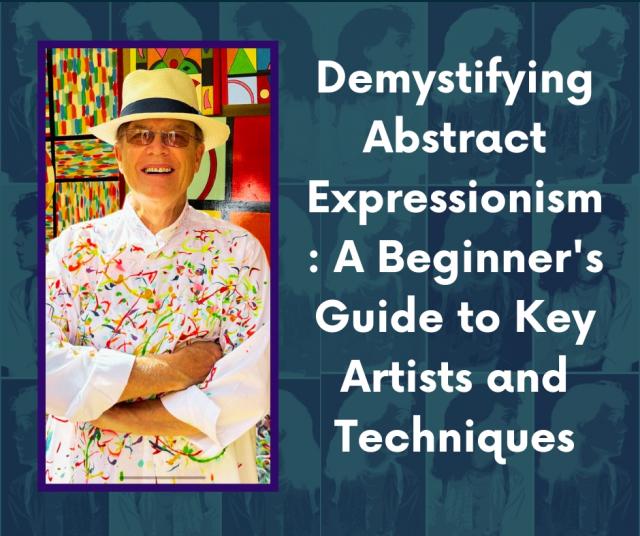Anthony Bell - Abstract Artist. Studios in Brazil, Spain and the United Kingdom.
Welcome, fellow art enthusiasts, to a journey through the captivating world of Abstract Expressionism. As an abstract artist myself, I'm excited to unravel the mysteries of this dynamic movement and introduce you to its key artists and techniques. Whether you're a seasoned art aficionado or a curious newcomer, prepare to be inspired and intrigued by the boundless creativity and innovation of Abstract Expressionism.
Abstract Expressionism emerged in the mid-20th century as a radical departure from traditional artistic conventions, challenging the notion that art must represent recognisable objects or figures. Instead, artists of this movement sought to convey raw emotion, inner turmoil, and the human experience through abstract forms, bold colors, and gestural brushwork.
One of the towering figures of Abstract Expressionism is Jackson Pollock, known for his revolutionary "drip painting" technique. Pollock famously placed his canvases on the floor and dripped, poured, and splattered paint onto them in a frenetic, almost dance-like manner, and the result? Dynamic, chaotic compositions such as "Autumn Rhythm (Number 30)" and "Blue Poles," which pulsate with energy and emotion.
Another influential artist of the movement is Willem de Kooning, whose powerful and expressive canvases blur the line between abstraction and figuration. De Kooning's iconic "Woman" series, with its bold, gestural brushstrokes and fragmented forms, explores themes of femininity, desire, and identity in post-war America. Works like "Woman I" and "Excavation" are visceral expressions of the human psyche, inviting viewers to delve into the depths of the artist's psyche.
Mark Rothko, with his luminous, colour-field paintings, offers a more meditative and contemplative approach to Abstract Expressionism. Rothko's monumental canvases, such as "No. 14" and "Untitled (Black on Grey)," envelop viewers in fields of vibrant color, inviting them to lose themselves in the transcendent experience of pure abstraction. His work speaks to the universal human desire for connection, spirituality, and transcendence.
As you delve deeper into the world of Abstract Expressionism, you'll encounter a diverse array of techniques and approaches employed by artists to convey their innermost thoughts and emotions. From the frenetic energy of Pollock's drip paintings to the contemplative serenity of Rothko's color fields, each artist brings a unique perspective and voice to the movement.
So, what makes Abstract Expressionism so compelling and relevant today? At its core, this movement reminds us that art has the power to transcend language and culture, speaking directly to the human experience in all its complexity and nuance. Whether through bold gestures or subtle brushstrokes, Abstract Expressionist artists invite us to explore the depths of our own emotions and perceptions, challenging us to see the world in new and unexpected ways.
As you continue your journey into the world of Abstract Expressionism, I encourage you to embrace the mystery and magic of this dynamic movement. Allow yourself to be swept away by the raw emotion, vibrant colours, and expressive forms that define this revolutionary artistic style. And remember, in the world of abstract art, there are no rules; only endless possibilities for creativity and exploration.
Anthony Bell - Abstract Artist
From my Studio in Almeria, Spain
Email: [email protected]
“Every good artist paints what he is.”
Jackson Pollock
This post first appeared on Exploring The Limitless Universe Of Abstract Art, please read the originial post: here

